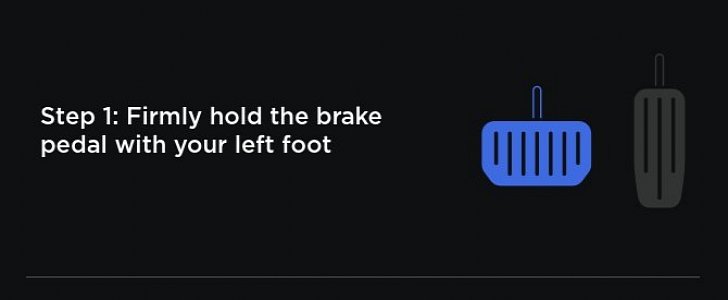The cheetah is the fastest land animal in the world. The wild cat has an acceleration time that can leave most of the world’s cars in the dust: from a standstill, it can reach 69.5 mph (112 kph) in three seconds.
Largely responsible for that is the feline’s body, which seems to have been specifically bred for speed: long legs, elongated spine, and a long tail for balance. But another secret is of course the stance the cat adopts before leaping for its prey: head down, tail higher up, legs primed.
This last part is a secret Tesla seems to be planning to use not long from now to give its Model S and X cars a better launch position and subsequently a better acceleration time.
As per a Twitter user by the name of Green, the Launch Mode already available in these cars will soon get updated with a feature he calls cheetah stance. This feature should essentially prime the car for the perfect launch by lowering the front suspension and adjusting the damping, while keeping the rear end a tad higher.
This new feature is built to take advantage of the smart adaptive air suspension introduced last year for the Model S and X Performance as part of the Raven update.
“Model S/X Performance based on raven get new launch mode. - To improve traction, Adaptive Suspension performs a "cheetah stance" (lowers the front axle) and adjusts damping,” Green said in a tweet published over the weekend, citing the release notes for the new feature.
Supposedly, the feature is already available in some cars as part of the early access program, and to prove it Green even published the steps needed to activate the feature.
First, the suspension must be set to Low. Then the brake pedal must be held down, and at the same time the driver needs to press the accelerator. Once the Launch Mode is enabled, one usually releases the brake and the car shoots off, but for the cheetah stance to kick in and lower the front suspension ever further, the brake must be held for a little while longer.
This last part is a secret Tesla seems to be planning to use not long from now to give its Model S and X cars a better launch position and subsequently a better acceleration time.
As per a Twitter user by the name of Green, the Launch Mode already available in these cars will soon get updated with a feature he calls cheetah stance. This feature should essentially prime the car for the perfect launch by lowering the front suspension and adjusting the damping, while keeping the rear end a tad higher.
This new feature is built to take advantage of the smart adaptive air suspension introduced last year for the Model S and X Performance as part of the Raven update.
“Model S/X Performance based on raven get new launch mode. - To improve traction, Adaptive Suspension performs a "cheetah stance" (lowers the front axle) and adjusts damping,” Green said in a tweet published over the weekend, citing the release notes for the new feature.
Supposedly, the feature is already available in some cars as part of the early access program, and to prove it Green even published the steps needed to activate the feature.
First, the suspension must be set to Low. Then the brake pedal must be held down, and at the same time the driver needs to press the accelerator. Once the Launch Mode is enabled, one usually releases the brake and the car shoots off, but for the cheetah stance to kick in and lower the front suspension ever further, the brake must be held for a little while longer.
Model S/X Performance based on raven get new launch mode.
— green (@greentheonly) April 4, 2020
- To improve traction, Adaptive Suspension performs a "cheetah stance" (lowers the front axle) and adjusts damping. pic.twitter.com/4QNhN50rPX

